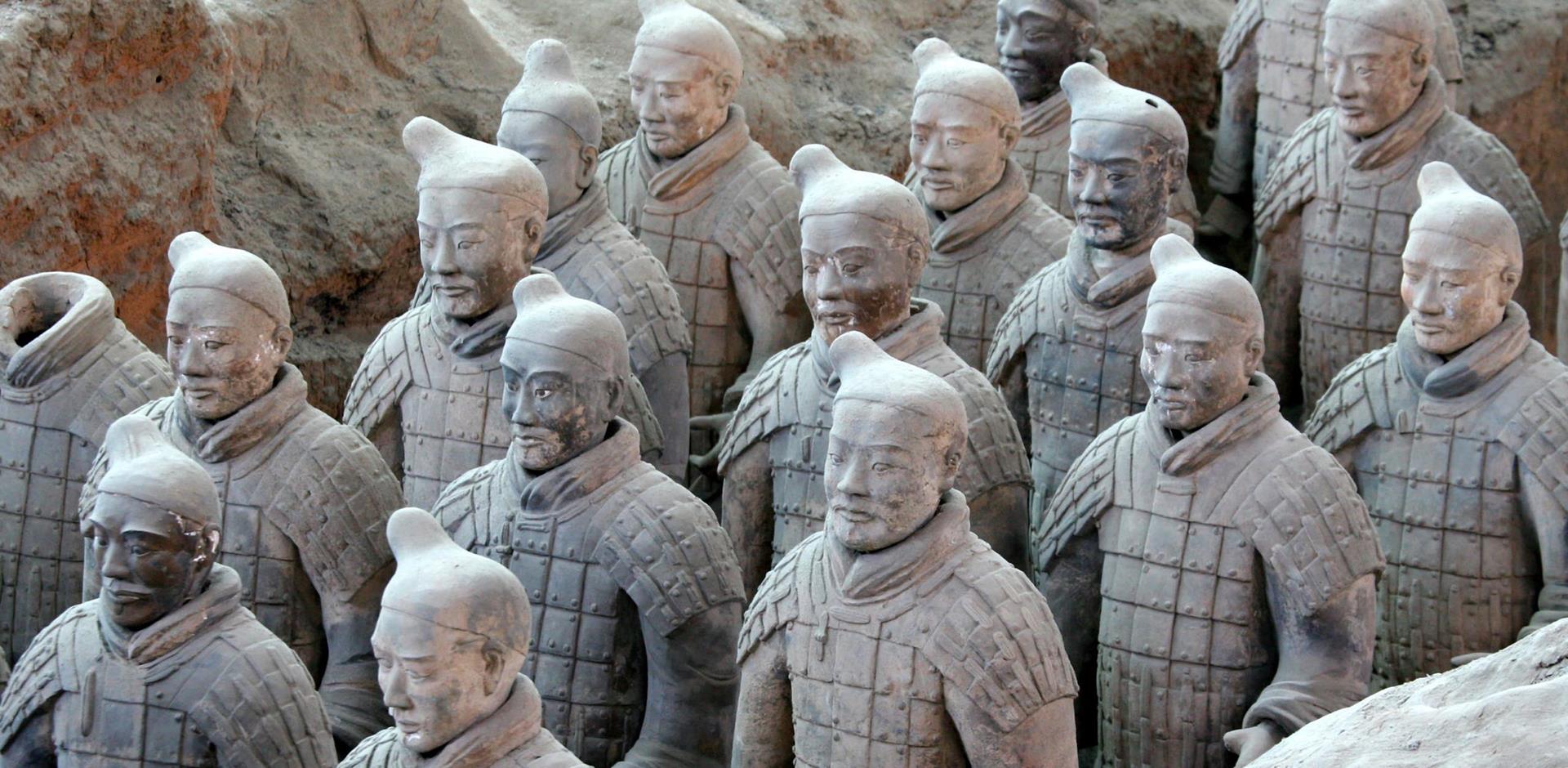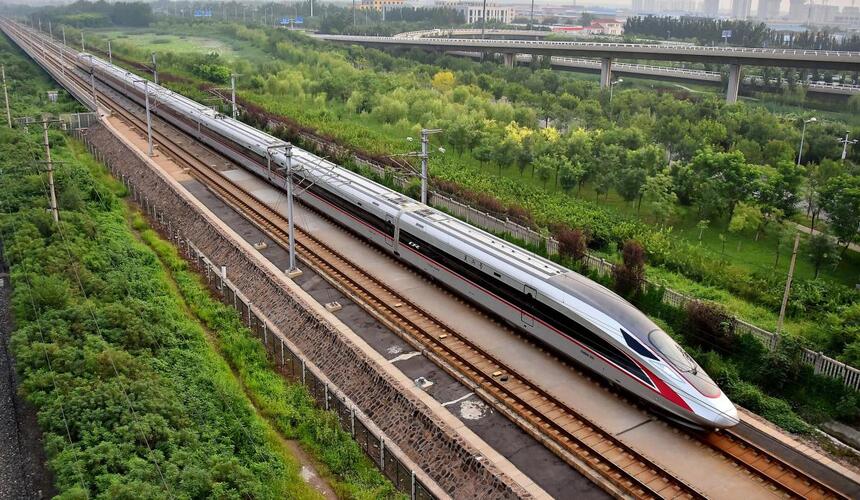The golden city of China
Marvel at the ancient city in China, Xian. Once it was the main capitol for 13 dynasties. At present, it is the home to gleeful cultures, numerous religions, different customs, and divine dishes. The buried city with more than 3100 years of history, and so many significant historical ruins, relics and monuments, has currently exposed to make an excellent tourism city. The Army of Terracotta Warriors, the Tomb of Emperor Jingdi, Xī’an City Walls and the Muslim Quarter are the must-see attractions in this classical city. Once you start wandering the city, this will be an incredible experience you can’t digest within one journey.
Xian experiences four distinct seasons due to its temperate continental monsoon climate. Summers are typically warm and wet in Xi’an, whereas winters are typically chilly and dry. The summer season in Xi’an is extremely warm. July, the warmest month of the year, occasionally reaches temperatures of around 36 °C (96 °F). The rainfall season lasts from July to September, although April through October receives substantial precipitation in the form of brief showers. Spring and autumn are the best seasons to visit Xi’an. In general, spring has moderate to warm temperatures; however, there are instances of rapid temperature fluctuations and a significant temperature difference between day and night. Autumn weather exhibits certain parallels with spring weather. In its entirety, it is amazing.

Terracotta Army
The Terracotta Army is one of the most famous archaeological finds in the world. For two millennia, this subterranean army of thousands has silently guarded the soul of China's first unifier. Every army possesses its own set of distinctive weapons, postures, and facial features. According to the consensus among archaeologists, Qin Shi Huang either feared the vanquished spirits that awaited him in the afterlife or anticipated that his rule would persist in death as it had during his lifetime.

Xian Ancient City Wall
Xi’an has always been an important city as being one of the oldest ‘Four Great Ancient Capitals’ and the starting point of the Silk Road. Besides the Terracotta Warriors, riding a bike on the city wall can also be a highlight of your trip. It is China’s most complete city wall, as well as one of the largest military architectural systems in the world. The base was built of earth, quick lime, and glutinous rice extract, making it extremely strong. This 12m high and 14km length City Wall, it is perfect for walking or cycling.

Giant Wild Goose Pagoda
The Great Wild Goose Pagoda is a stone pagoda located inside the Ci'en (Temple of Mercy) monastery in Xi'an. It was constructed in 652 to commemorate the return of monk Xuanzang, the revered abbot of the temple. This courageous person in Chinese Buddhist history spent sixteen years traveling west along the Silk Road and exploring the birthplace of Buddhism. Upon his return, he brought hundreds of sutras or Buddhist texts. The widely read “Journey to the West“ novel written during the Ming dynasty was inspired by his incredible voyage.

Mount Hua
Mount Hua is a very challenging mountain, it is quite steep on almost every route. It has numerous religious sites, including Taoist temples, pavilions, and scriptures that have been etched and are strewn around the mountain. It's one of China's five Great Mountains, with rickety planks, steep mountains, dangerous stair sections, and iron staircases.

Xi'an Muslim Quarter
The streets of Xi’an’s Muslim quarter are bustling. Delicacies including Roujiamo lamb burgers, persimmon cakes, and ``smoked ice-cream``—a bowl of puffed cereal coated in liquid nitrogen—draw visitors from various parts of the globe. These offerings are displayed at small stalls and restaurants.
As the starting point of the Silk Road, the city also boasts a unique cuisine that combines Chinese and Middle Eastern flavors. The cuisine of Xi’an includes a lot of bread dishes and noodle meals. Historically, due to the abundance of spices from trade, dishes tend to be heavy in flavor and spice, such as cumin, chili, Sichuan peppercorns, and other spices. Thus, in Xi’an and the environs of Shaanxi province, the prevailing culinary flavors are characterized by “spicy and sour” and “fragrantly spicy”. Locals would tell you that Yangrou Paomo, a fragrant, flavorful, and spicy bowl of shredded flatbread soaking in mutton broth. It is considered the best food that can represent Xi’an.
Must-try: Yangrou Paomo, Chuan’er (Kabob), Pomegranate juice, Roujiamo (Xi’an meat burger), Liangpi (Cold noodles), Biangbiang noodles, Tangbao (Soupy dumpling).
Air
Xi’an Xianyang International Airport (IATA: XIY, ICAO: ZLXY) is the main airport serving the city of Xi’an, the largest and capital city of Shaanxi Province in Guanzhong, China. It can be reached by Express trains, taxi, and airport bus. The 29.5km intercity railway links Xian North Railway Station and Xian Xianyang Airport (XIY). This airport express train can finish the journey in 33 minutes with a maximum speed of 100 km/h. It is the cheapest and most convenient way from or to Xian downtown.
Train
There are three railway stations in the city including Xi’an Railway Station, North Railway Station and Xi’an South Railway Station. The Xi’an Railway Station is an essential station along the Eurasian Continental Bridge and the main rail hub in western China. It primarily operates regular train service to and from the majority of China’s cities, including Beijing, Shanghai, Chongqing, Chengdu, Guangzhou, and others. Additionally, the trains to and from Lhasa, Tibet, halt here. Bullet trains depart from the North Railway Station for well-known destinations such as Shanghai, Beijing, Luoyang, Guilin, Chongqing, Chengdu, and more.












